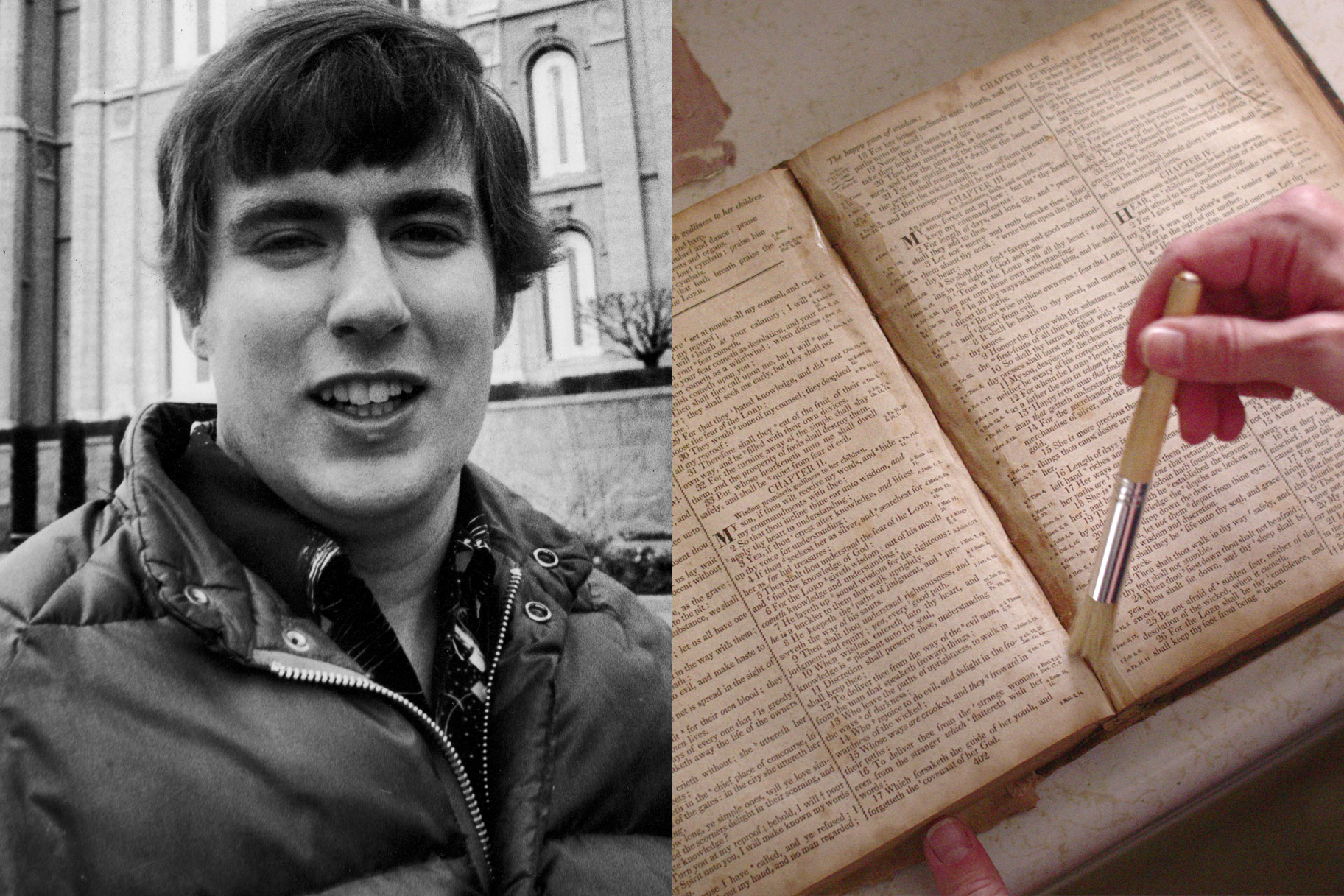Create a free profile to get unlimited access to exclusive videos, breaking news, sweepstakes, and more!
What Is The 'White Salamander Letter,’ The Document Central To The 1985 Mormon Bombings?
The document could have completely changed Mormonism — but it turns out its discovery in 1983 was a complete fraud.

Not long before a series of deadly pipe bombs shook Utah’s Mormon community in 1985, a controversial document threatened to challenge the very roots of the religion. That document — known as the "White Salamander Letter" — turned out to be a fraud, and the once beloved collector responsible for manufacturing it also happened to orchestrate the bombings in a failed attempt to cover up his deception.
(Warning: show spoilers ahead.)
Mark Hofmann fashioned a lucrative career out of forgery. The devout Mormon purported to be a historian with a natural talent for sniffing out rare and valuable documents, including a supposedly undiscovered Emily Dickinson poem, and others allegedly featuring Mark Twain and George Washington’s signatures, Deseret News reported in 2005.
Hofmann also had a knack for "finding" pivotal documents detailing the history of his own religion, The Church of Jesus Christ of Latter-day Saints. He was celebrated in the early 1980s for seemingly finding a long-lost document connected to the religion's famed gold plates — metallic pages allegedly containing hieroglyphics that LDS founder Joseph Smith translated into the Book of Mormon, the religion’s most sacred text.
Hofmann later counterfeited a document that became known as the “White Salamander Letter,” which he claimed he had found on Dec. 27, 1983, as outlined in Netflix’s new docuseries, “Murder Among the Mormons.” The letter was supposedly penned by Martin Harris, an early disciple of Smith who helped fund the first printing of the Book of Mormon. Harris “wrote” in the letter that Smith had been led to the golden plates by a spirit in the form of a white salamander.
This letter contradicted church teachings. Previously, it was thought to be an angel who led Smith to the plates. This letter — if proved to have actually been true — would imply that traditional Christian concepts such as angels were not at the root of the religion, but that more magical or mystical creatures were involved. It also suggested that the church's founder may have been practicing folk magic. The so-called finding even prompted the church to speak out, with LDS spokesman Jerry Cahill enlisted to ensure the public that the church was not in a crisis of faith over the letter, as many believed at the time.
This all made Hofmann’s supposed finding a major source of contention — and a valuable one too.
Steven F. Christensen, a 30-year-old businessman and collector of Mormon artifacts, paid Hofmann $40,000 for the letter, though investigators speculated that he may have promised Hofmann an even greater amount, the New York Times reported in 1985. Hofmann at this point was soliciting cash from investors, with the stated aim that he'd use the funds to procure valuable artifacts and documents, then sell them at a profit. He would promise investors a sizable return, sometimes up to 100 percent. It ended up being a Ponzi scheme, essentially, as some of the sales Hofmann envisioned making never materialized, driving him deeper into debt. In order to pay back earlier investors, Hofmann was forced to rely on the cash new investors were funneling to him.
As the docuseries points out, Hofmann was hoping the Library of Congress would pay him over $1 million for his fraudulent "Oath of a Freeman," supposedly the first printed document in Britain's American colonies, though the deal never went through.
He was also hoping to sell "McLellin Collection" – a large group of documents purportedly written by early Mormon leader William E. McLellin. The "McLellin Collection" he had on offer was another fraudulent collection of documents that could have had devastating effects on the church. Hofmann said there was a letter written by Smith's wife, which claimed that it was Smith's brother who had found the gold plates. Christensen was considering buying the collection, and Hofmann was supposed to deliver it to him the morning of the bombings.
In the end, it’s believed that Hofmann resorted to murder to prevent his scheme from being uncovered. It’s also possible, as the New York Times reported, that Christensen may have discovered that the "White Salamander Letter" and possibly the "McLellin Collection" were forged.
A nail-filled pipe bomb, delivered by Hofmann inside of a parcel, went off at Christensen’s downtown Salt Lake City office on Oct. 15, 1985, killing him. Just hours later, Kathleen Sheets, the wife of Christensen’s former business associate, Gary Sheets, died after another bomb went off at their nearby home. The following day, Hofmann accidentally blew up his own sports car while carrying around another bomb. He was seriously injured in the blast, but survived; he eventually confessed that he was behind the two attacks.
Hofmann later admitted to officials that his reasons for creating the “White Salamander Letter” as well as the "McLellin Collection" weren’t solely financial. He was interested in throwing a wrench into the roots of his religion and possibly changing its history, as he admitted in his final confession, which is partially featured in "Murder Among the Mormons."
Hofmann is currently incarcerated at Central Utah Correctional Facility, where he is expected to remain until his death.

























